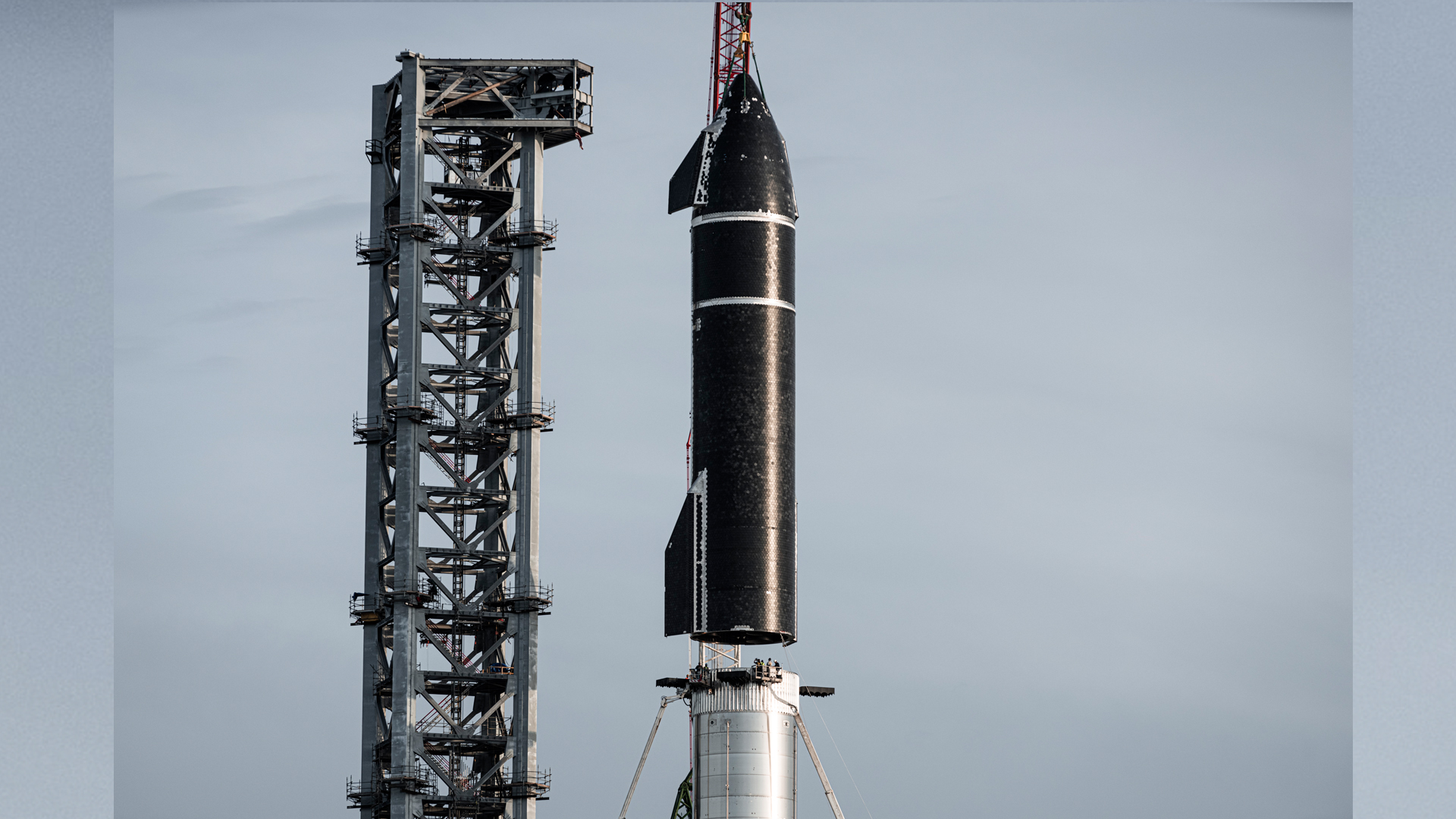
The biggest rocket ever built may be ready to fly surprisingly soon.
The first full-size prototype of SpaceX's Starship vehicle should be ready to launch on an orbital test flight "in a few weeks," company founder and CEO Elon Musk said via Twitter on Saturday (Aug. 14).
That target seems very soon, given that SpaceX has yet to run the 395-foot-tall (120 meters) rocket through its usual battery of preflight tests. And there's a big logistical hurdle to overcome as well: The U.S. Federal Aviation Administration (FAA) is conducting an environmental assessment of SpaceX's South Texas orbital launch site, where Starship will lift off.
Related: SpaceX's Starship becomes the world's tallest rocket
Photos: SpaceX lifts huge Super Heavy rocket onto launch stand
The FAA has not yet released its draft review, and the agency will accept public comments about the report for 30 days after it comes out. So Starship's orbital jaunt cannot feasibly happen just a few weeks from now — a reality that Musk acknowledged in his Saturday tweet, which ended with the words "pending regulatory approval."
In fact, Musk's tweet may have been designed to put a little pressure on the FAA to pick up the pace. After all, he has expressed frustration with FAA regulations in the past, stressing that such rules need to be streamlined if humanity is ever going to achieve game-changing launch frequencies.
And SpaceX intends Starship to be a game changer. The vehicle, which consists of a huge first-stage booster known as Super Heavy and a spacecraft called Starship, is designed to take people and cargo to the moon, Mars and other distant destinations.
Get the Space.com Newsletter
Breaking space news, the latest updates on rocket launches, skywatching events and more!
Related: See the Evolution of SpaceX's Rockets in Pictures
SpaceX has conducted test flights of previous Starship prototypes, sending the spacecraft 6.2 miles (10 kilometers) into the sky from the South Texas site, which is near the Gulf Coast village of Boca Chica. But the upcoming test flight will mark the first time a fully stacked Starship — a Super Heavy topped with a Starship spacecraft — takes flight, and the first time the system reaches orbit.
If all goes according to plan, Super Heavy will splash down in the Gulf of Mexico shortly after liftoff. Starship, meanwhile, will power its way to orbit, loop around our planet once and come down in the Pacific Ocean, near the Hawaiian island of Kauai.
SpaceX has already taken some steps toward this landmark flight. On Aug. 6, for example, the company stacked the two Starship components — a 29-engine Super Heavy called Booster 4 and a six-engine Starship prototype known as SN20 — atop the South Texas orbital launch mount for the first time ever. But the duo was de-stacked later that day so technicians could perform some more work on each element.
Mike Wall is the author of "Out There" (Grand Central Publishing, 2018; illustrated by Karl Tate), a book about the search for alien life. Follow him on Twitter @michaeldwall. Follow us on Twitter @Spacedotcom or Facebook.
Join our Space Forums to keep talking space on the latest missions, night sky and more! And if you have a news tip, correction or comment, let us know at: community@space.com.

Michael Wall is a Senior Space Writer with Space.com and joined the team in 2010. He primarily covers exoplanets, spaceflight and military space, but has been known to dabble in the space art beat. His book about the search for alien life, "Out There," was published on Nov. 13, 2018. Before becoming a science writer, Michael worked as a herpetologist and wildlife biologist. He has a Ph.D. in evolutionary biology from the University of Sydney, Australia, a bachelor's degree from the University of Arizona, and a graduate certificate in science writing from the University of California, Santa Cruz. To find out what his latest project is, you can follow Michael on Twitter.









